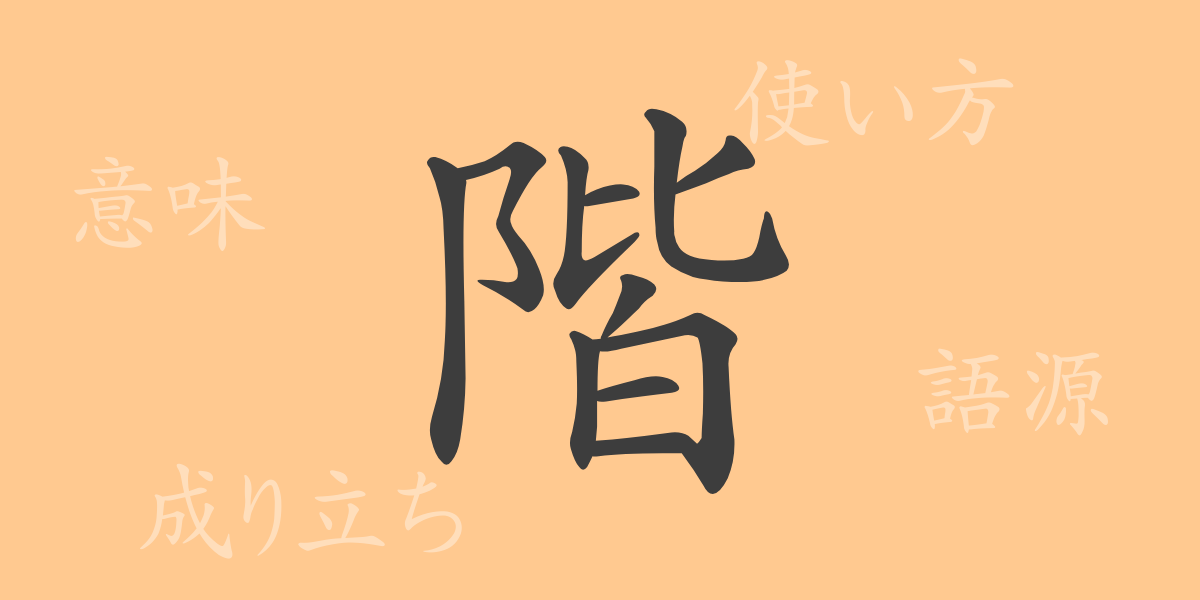The Japanese language is home to a vast array of 漢字, each with its own unique history and meaning. One such commonly used 漢字 in our daily lives is “階.” This character is essential for expressing various levels, from architecture to social structures. In this article, we delve into the origins, meanings, usage, pronunciation, and related phrases and idioms of “階.”
The Origin (Etymology) of 階
The 漢字 “階” was born in ancient China and was originally used to mean steps or a staircase. This 漢字 is considered a pictograph that symbolizes the stairs of a building, and its shape has evolved over time. It is formed by combining “発,” which signifies the landing of a staircase, and “土,” which means the foundation, to establish “階.”
The Meaning and Usage of 階
The primary meaning of “階” is to denote the floors of a building or to express stages or levels of something. For instance, phrases like “going up to the fourth floor” or “going through stages” demonstrate its wide usage in indicating physical height or the progression of a process. It is also used to describe social status or class, as seen in expressions such as “upper class” or “class struggle.”
Pronunciation, Stroke Count, and Radical of 階
There are multiple pronunciations for “階” in Japanese, but the most common are as follows:
- Pronunciation: On’yomi is “かい,” no common kun’yomi
- Stroke Count: 12 strokes in total
- Radical: 阜 () or 阝 ()
Idioms, Phrases, and Proverbs Using 階 and Their Meanings
There are numerous idioms, phrases, and proverbs that include “階” in the Japanese language. Here are some examples:
- 階層: A word that refers to social ranks or classes.
- 階段: Steps for ascending floors.
- 上の階: Depending on the context, it can mean the floor above physically, or metaphorically, a higher status or level.
- 一階建て: A building with only one floor.
Summary on 階
The 漢字 “階” plays a vital role in the Japanese language due to the diverse concepts it symbolizes. From the floors of physical structures to life’s stages, and even social classes, this 漢字 is deeply rooted in Japanese language and culture. This article has hopefully provided insight into the history and meanings of “階” and enhanced your understanding of its uses. Knowing the rich background behind each word allows us to appreciate the depth of the Japanese language even more.

























